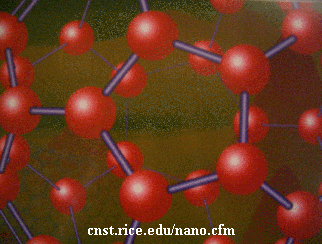The SCNCM Solution
The dismantled SCNCMs,
still suspended in blood, then come into contact with the second ASPM, which is
designed to be permeable to water, blood cells, plasma, platelets, and other
non-toxic blood components. However, it is not permeable to fully assembled
SCNCMs bonded to toxins, or the toxins themselves, which must recirculate to the
first membrane. The SCNCM,
 now in pieces, is pushed through the second ASPM.
This catalyst creates a chemical reaction between the pieces of the SCNCM,
causing them to reattach to one another. The fully assembled SCNCM is
reintroduced into the bloodstream and goes on to attach itself to more toxins in
order to repeat the process.
now in pieces, is pushed through the second ASPM.
This catalyst creates a chemical reaction between the pieces of the SCNCM,
causing them to reattach to one another. The fully assembled SCNCM is
reintroduced into the bloodstream and goes on to attach itself to more toxins in
order to repeat the process.
The SCNCM system would
require no outside power or maintenance, and could continue to cleanse blood for
the rest of the patient's life. This new system has the potential to be as
efficient, if not more so, than a natural kidney. In addition, SCNCMs could be
mass produced, billions at a time, without individual construction, thereby
lowering cost.
Click here for a simple model of
the procedure
Click here to
return to the Home Page
 now in pieces, is pushed through the second ASPM.
This catalyst creates a chemical reaction between the pieces of the SCNCM,
causing them to reattach to one another. The fully assembled SCNCM is
reintroduced into the bloodstream and goes on to attach itself to more toxins in
order to repeat the process.
now in pieces, is pushed through the second ASPM.
This catalyst creates a chemical reaction between the pieces of the SCNCM,
causing them to reattach to one another. The fully assembled SCNCM is
reintroduced into the bloodstream and goes on to attach itself to more toxins in
order to repeat the process.